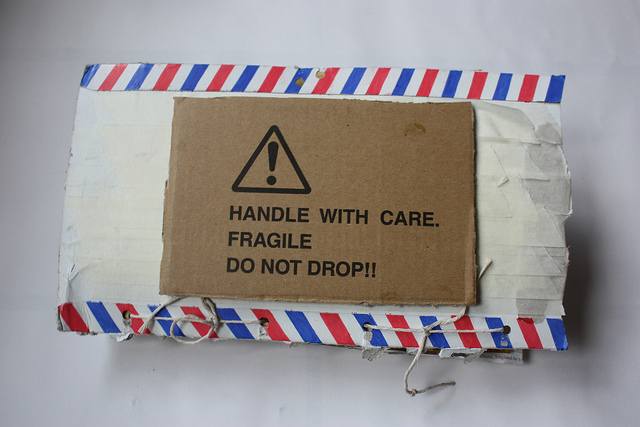
With all the talk in the past few days about the possibility of Australia and Indonesia coming into conflict—be it diplomatic or otherwise—it’s worth understanding some of the pressure points in the relationship. At the top of the list, at least from Jakarta’s perspective, would be the events of late 1999. Following a self-determination ballot in August 1999, the security situation in East Timor worsened and—after a period of active diplomacy and coercive efforts supported by the US—Indonesia consented to the deployment of an Australian-led, UN-authorised peacekeeping force (known as INTERFET).
Aside from the obvious reasons, this case study deserves close scrutiny because a certain mythology (and oversimplification) has crept into the narrative over the years. In the latest issue of the Security Challenges journal, I present a new take on the events of 1999. As part of my research for this article, I interviewed the six Ministers then serving in the National Security Committee of Cabinet, as well as nine others who were intimately involved in Australian policy-making. One key lesson from the events of 1999 is that Australia will—in all but the most extenuating circumstances—prioritise the Jakarta–Canberra relationship above almost all other concerns.
While some see the violence of September 1999 as a catastrophe Australia could—and should—have prevented, I instead suggest that Australia’s ability to influence this outcome was limited. The events of 1999 should be considered, to some degree, independently of events in 1998. In January 1999 the Indonesian President, B.J. Habibie, announced that East Timor’s status would be resolved through an act of self-determination. Though Australia had advocated Indonesian policy action on the issue of East Timor, this decision was completely unanticipated and generated acute policy challenges for Australia. As such, Habibie’s announcement caught Australia by surprise and precipitated a period of reactive policy-making.
As 1999 progressed, it became clear than the Indonesian military (TNI) were unable or unwilling to provide adequate security for the ballot. This was the primary policy challenge for Australia—having advocated a new Indonesian approach, Australia was politically tied to the outcome. The best method for ensuring the security of the ballot was widely acknowledged to be a pre-ballot peacekeeping force (PKF) deployed under Indonesian consent. Given the abhorrent violence of September 1999, it’s no surprise that much of the historical debate centres on this issue.
Clinton Fernandes uses leaked documents to argue that Australia ‘worked assiduously’ to prevent a pre-ballot PKF. However, this account overlooks a number of factors that point to a more balanced Australian approach. Australia’s plan, in early 1999, was to maximise pressure on Indonesia—specifically the TNI—in the hope that they would improve security. Though Fernandes suggests a rift in Australia–US relations on this point, public testimony from the American Assistant Secretary of State, Stan Roth, supported the Australian approach. Fernandes’ account also overlooks Australia’s subsequent efforts to secure a pre-ballot PKF.
In April 1999, TNI forces failed to intervene during a churchyard massacre in Liquica, in which approximately sixty civilians were killed. This prompted Howard to call Habibie to suggest a high-level meeting in order to discuss the violence and possible solutions.
The ‘Bali Summit’ of 27 April 1999 started with a private meeting between Howard and Habibie. Howard asked Habibie to accept a pre-ballot PKF, but Habibie judged the situation in East Timor to be a secondary concern. While the TNI had accepted his decision for a self-determination ballot, Habibie felt they would not accept foreign troops on (what was still) Indonesian soil. Howard pressed Habibie, but he was rebuffed—Habibie insisted that his ‘position would be absolutely untenable in Jakarta if he were to agree to this’.
Hugh White, then a Deputy Secretary in the Department of Defence, has since described the Bali Summit as the ‘last best chance to avoid the disasters of September’. I argue that while Australia could have pursued a pre-ballot PKF more forcefully, this would’ve entailed serious strategic risk. Had Habibie accepted Howard’s request, it could’ve precipitated a TNI coup or more determined efforts to subvert the ballot. These would have been catastrophic outcomes for Australia.
My research suggests that Australia’s primary policy challenge throughout 1999 was that of balancing competing strategic objectives. Pursuing one objective—such as reduced violence in Timor—could imperil more important objectives, such as supporting Indonesia’s continued democratic reform. Though Australia didn’t prevent the violence of September 1999, this wasn’t due to apathy, neglect or incompetence. Rather, this outcome reflects Australia’s invidious circumstances, where avoiding worst-case scenarios was a significant achievement. It also suggests that in all but the most-dire circumstances, Australia will likely prioritise good relations with Jakarta above other concerns. Given a bipartisan desire to address the ‘boatpeople’ issue, this notion could be of great relevance over the next year or so. A new Indonesian President, depending on their disposition towards Australia, could be another cause for cautious diplomacy.
After considering the events of 1998–1999, it would be foolish to conclude that Australia’s relationship with Indonesia should be paralysed by the fear of worst-case scenarios. However, it would be equally foolish to assume that the same priorities that motivated Australian behaviour in 1999 are less relevant today. Indonesia continues to be of immense and enduring importance to Australia. While this idea mightn’t resonate with a domestic audience, it’s a strategic reality unlikely to change, and should sensibly inform the consideration of any new policy which might pose a risk to the bilateral relationship.
Iain Henry is a Fulbright Scholar and PhD candidate at the Australian National University’s Strategic and Defence Studies Centre. These are his personal views only. He tweets at @IainDHenry. Image courtesy of Flickr user jenny louise johnson.

